Survey Sees HE Faculty Embracing Digital Changes
SAGE’s 2022 pedagogy survey, building on prior annual surveys launched in 2020 and repeated in 2021, show some exciting developments in faculty engagement and sentiment, with feedback capturing institutional and faculty engagement on inclusiveness alongside work on decolonizing the curriculum. This year we added new questions on textbook provision, to find just under half of respondents agree that students expect textbooks to be provided to them, with 41 percent of respondent institutions already answering that need. Meanwhile, faculty sentiment in relation to hybrid teaching has settled significantly, with those feeling challenged by this mode down from 37 percent in 2021 to 22 percent in 2022. And when asked about the future, 74 percent of respondents believe that it is certainly a digital one in relation to teaching and learning resources.
Our 2022 survey had 716 respondents, with most respondents (77 percent) based in the UK and mainland Europe, followed by Africa (13 percent) and the Middle East (8 percent). Respondents represent a variety of disciplines, with the majority being in the social and behavioural sciences, where SAGE’s key pedagogy focus lies. Most respondents self-identify as instructors and/or course leaders, and just under half (45 percent) classify themselves as mid-career, with 30 percent late-career, and 19 percent early career.
Inclusive Learning
Reflecting important conversations in the HE community, for the first year we asked about inclusive design, aspects of the anti-racism movement and calls for decolonising the university.
Inclusive design is seen by the vast majority (86 percent) of respondents as important to their university. We found that respondents who felt positively about hybrid teaching are significantly more likely to see inclusive design as very important at their institution, compared with those who felt negatively about hybrid or online teaching.
Respondents were also asked about activity around decolonising the curriculum in their institutions. While there were some respondents unsure of activity, and a proportion who felt there was none, the majority of respondents indicated an awareness of some work on decolonising the curriculum at their institution. The most common action reported was staff training and education, followed by reframing course content, and adding resources to reading lists. This suggests that the core activity is adapting and augmenting existing teaching provision rather than wholesale restructure or replacement (although 19 percent indicated re-writing of courses at their institution). This is of course a perception of activity, which can be limited by instructors’ sphere of experience. Nonetheless, it chimes well with our experience at SAGE working with our editors and authors (e.g. of textbooks, video and cases) on stronger representation and critical engagement with issues of inequity, racism and exclusion in society, as well as in the curriculum.
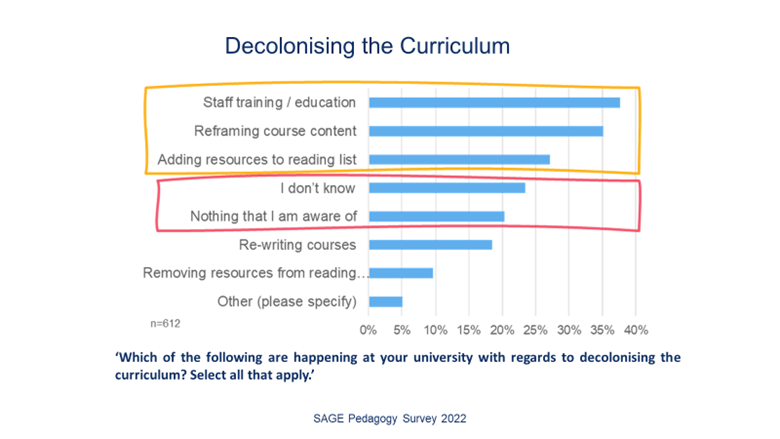
Student skills
We found that incoming students now need more support with digital learning skills than prior to the pandemic: 64 percent agreed to this statement, which is likely to reflect the cohorts entering university having had their pre-university education disrupted, alongside the cancellation of exams.
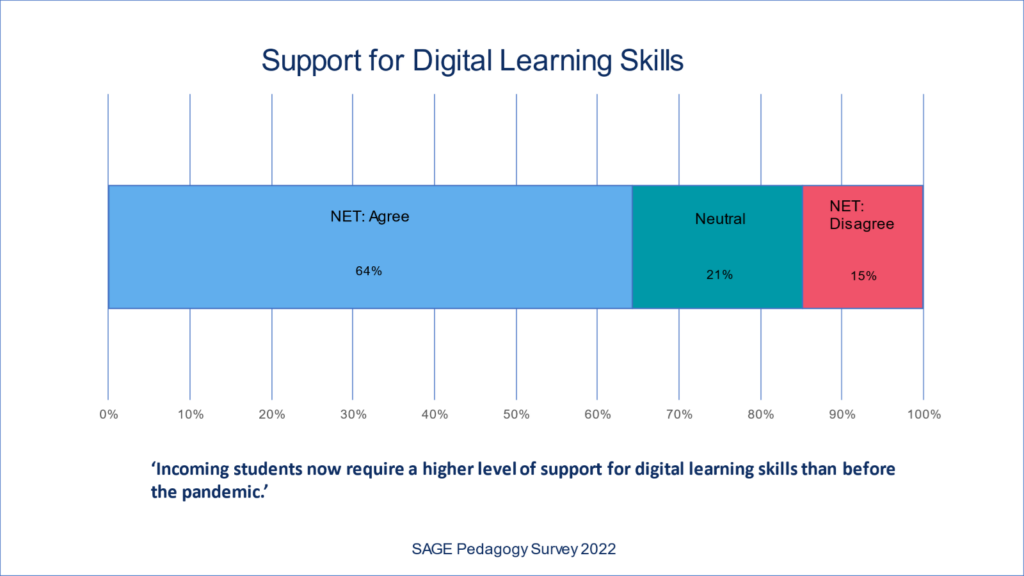
Faculty shared an increased need for student study skills resources, a strong uptick of interest from prior years, also noted through library uptake of our new product launches of SAGE Skills.
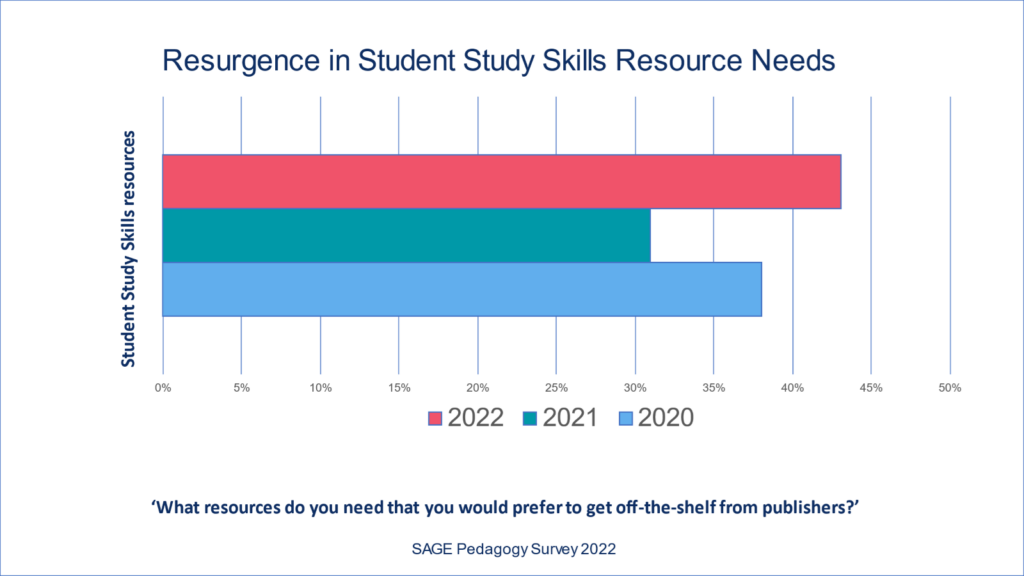
Digital Resources
Our questionnaire asked about faculty’s needs when considering teaching and learning resources. Generally, we continue to see textbooks (as ebooks) top of the wishlist, followed by open educational resources, case studies and video, before we see print textbooks mentioned.
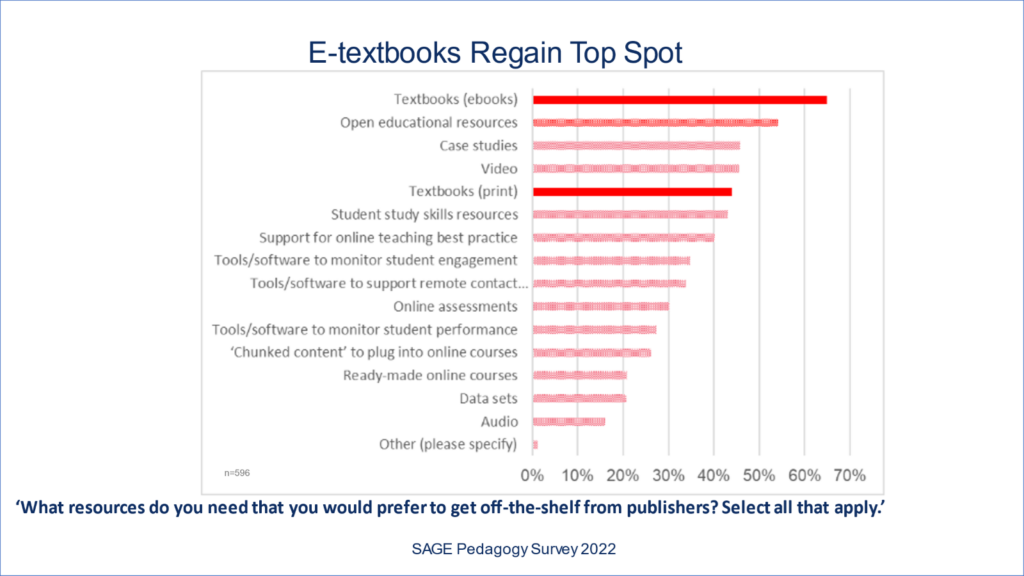
While e-textbook demand continues to exceed that of print, demand for print climbed back from a low of 25 percent during 2020 lockdown, to 44 percent in 2022. Open educational resources remain high on faculty lists, though at the lowest since our survey began (60 percent in 2020, 57 percent in 2021 and 54 percent this year). When asked to share their associations with “open” resources, responses ranged from any free-to-access content through to lesson plans, though journals were most commonly referred to.
As we continue to observe greater engagement with direct provision of textbooks to students, including through the library. Almost half of respondents agreed that students now expect textbooks to be provided by their Higher Education Institution. However, student expectation is not necessarily being met, as over half (56 percent) state that their institution does not provide students with textbooks. Of the 31 percent who answered that their university is providing students with set texts, the main institutional provider is the library (29 percent).
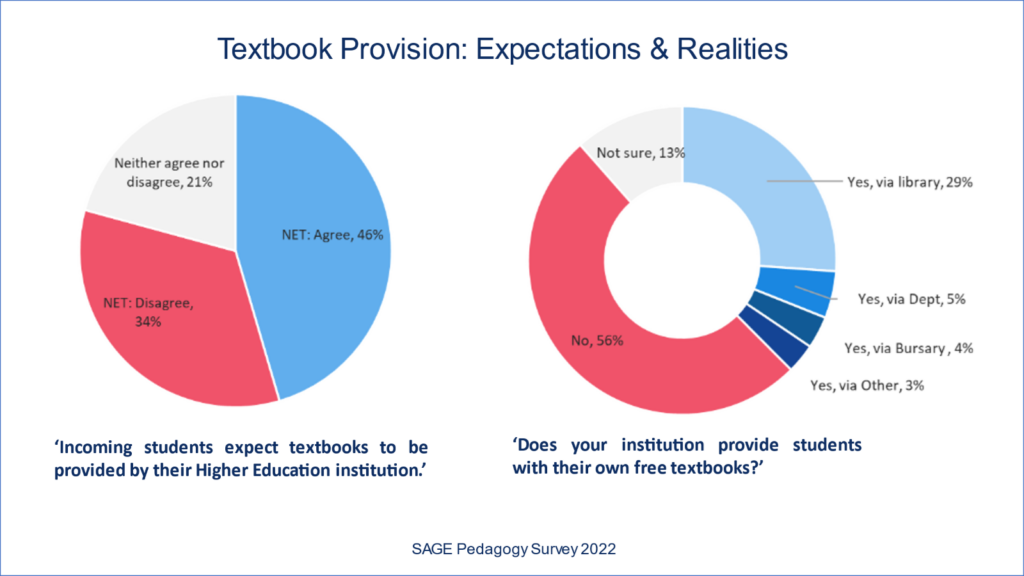
The majority of those aware of textbook provision systems at their institution felt positive or very positive about them, regardless of the method of delivery. Library provision did receive more positive ratings from late-career faculty in particular, while early-career faculty were most positive about bursary scheme provision.
This year we added new questions on assessments. The majority of instructors felt that assessment modes do not affect their resource selection. However, where it does affect decisions, the inclusion of on- and offline assessments is a selection factor for about a fifth of respondents. Automated grading only impacts 10 percent of respondents in terms of their resource selection.
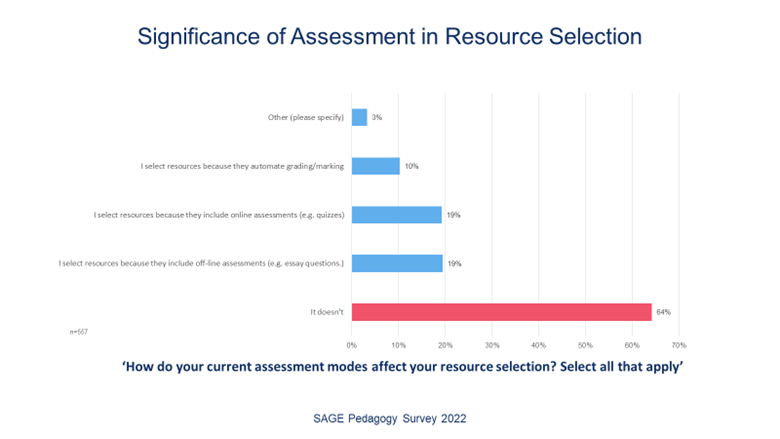
Faculty calls for more support of online teaching seen in prior surveys sharply declined between 2020 and 2021, perhaps indicating growing comfort as well as less reliance on this mode. Results describing hybrid teaching experiences add weight to this inference.
Reduction in Online and Hybrid
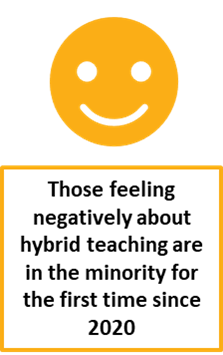
In a turnaround since last year, online or hybrid teaching is no longer expected to be the dominant teaching format over the next few years, with respondents reporting that over half (53 percent) of current teaching is in-person. However, 28 percent of respondents did have at least one module being run entirely online, while only 19 percent were offering hybrid teaching.
While hybrid classes have naturally dipped, instructor sentiment on hybrid teaching has undergone a positive turnaround: those feeling negatively about hybrid teaching are in the minority for the first time since 2020. In 2021, the majority of instructors reported feeling negatively about pandemic-wrought teaching changes, characterized largely by burnout. That sentiment has now dropped to about a third of instructors, halving the proportion of respondents that reported feeling tired or concerned. The percentage of instructors who reported feeling overwhelmed has declined from 20 percent in 2020 to 3 percent in 2022.
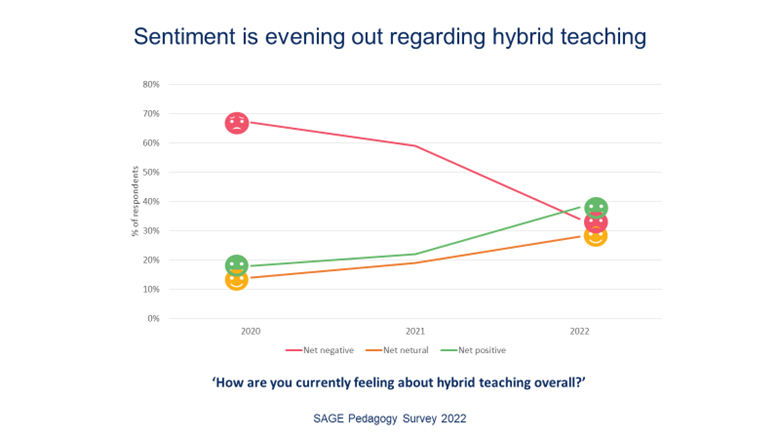
Alongside this, the percentage of respondents citing online teaching as one of their biggest challenges declined from 37 percent in 2021 to 22 percent in 2022.
Engagement
One of the primary teaching challenges reported was student engagement (placed third after workload and conducting research).
Instructors’ perspective of digital tools that directly affect student experience and engagement showed that interactive engagement tools and personalisation of students’ learning experience may be here to stay.
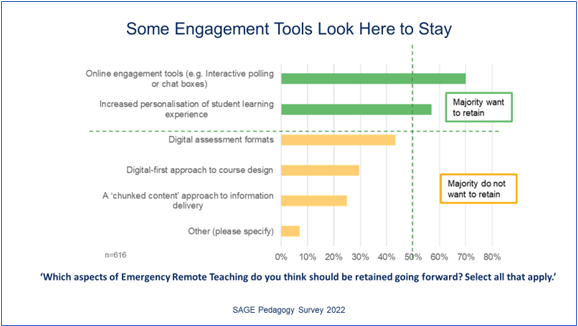
These engagement tools were the only aspect of ‘emergency remote teaching’ with universal popularity, with a majority of respondents — irrespective of career stage or sentiment towards hybrid teaching —selecting it for retention. When asked whether their students expect a digital-first approach to teaching and learning, respondents were mixed, with 38 percent feeling they do, 30 percent feeling that students do not expect a digital-first approach, and 32 percent were unsure. Given this mixed feeling we will continue to track this area in future surveys.
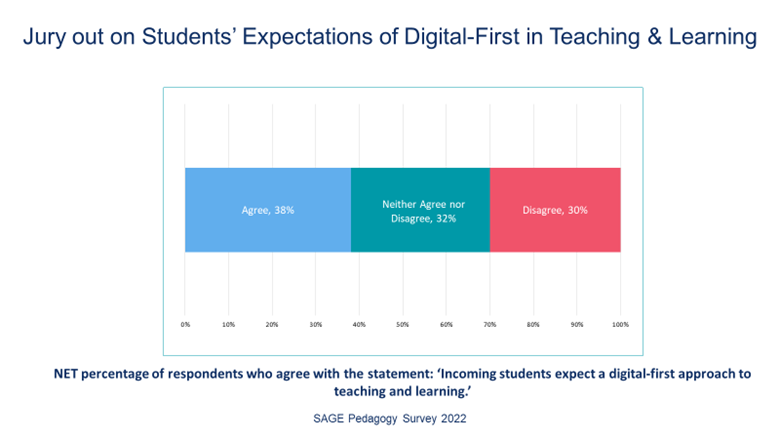
Looking ahead
Feedback from the 2022 survey indicates long-term shifts around digital, alongside some settling in faculty workloads. We continue to value the insights gleaned as we set our aim to stay relevant as an academic publisher focused on student and faculty success. To help us imagine the future, we asked respondents to tell us about their expectations in the next two or more years. 74 percent shared their belief that the majority of teaching and learning resources will be digital rather than print, while less than half, 45 percent, believe ebook availability will be mandatory for course text adoption. Finally, 24 percent of respondents believe their institution will provide students with free or subsidised resources from their reading lists. We look forward to seeing how responses return in 2023.






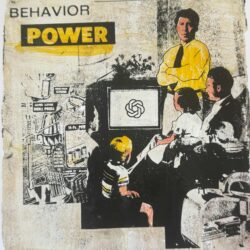






![Share Your Most Surprising Policy Citation for Chance to Win $500 [Closed] Share Your Most Surprising Policy Citation for Chance to Win $500 [Closed]](https://www.socialsciencespace.com/wp-content/themes/conferpress/images/default_thumbnail-new-border.jpg)























































































